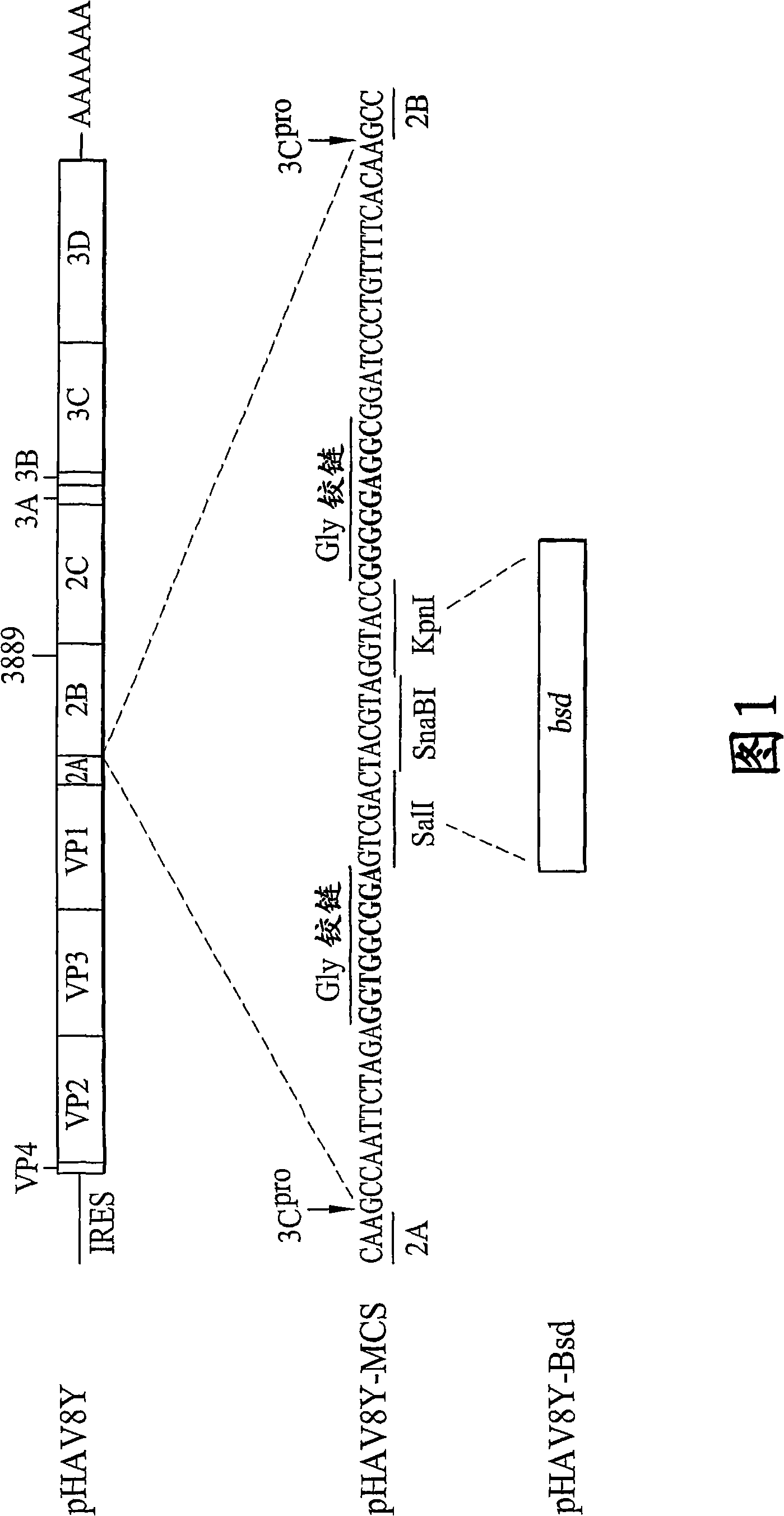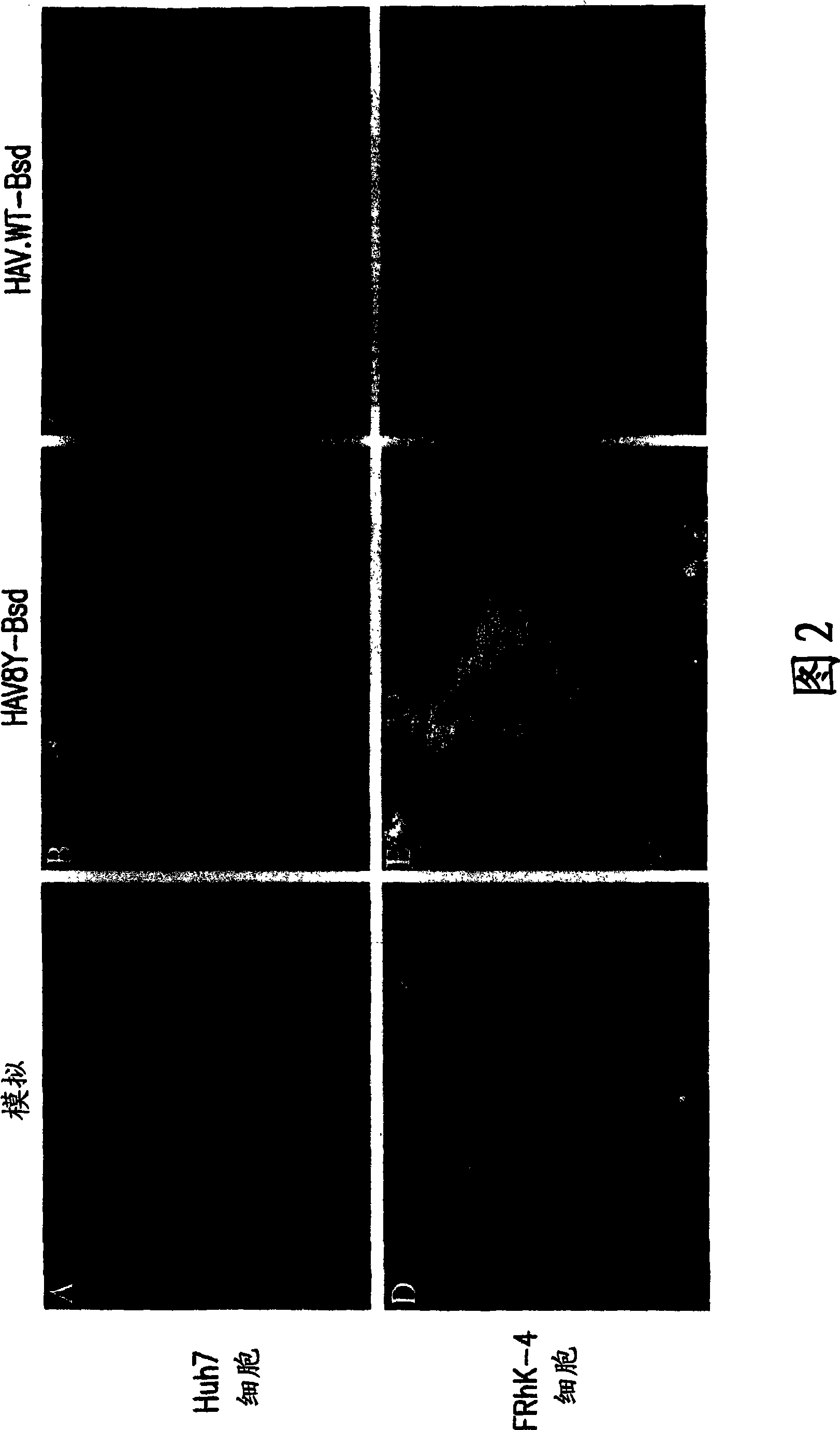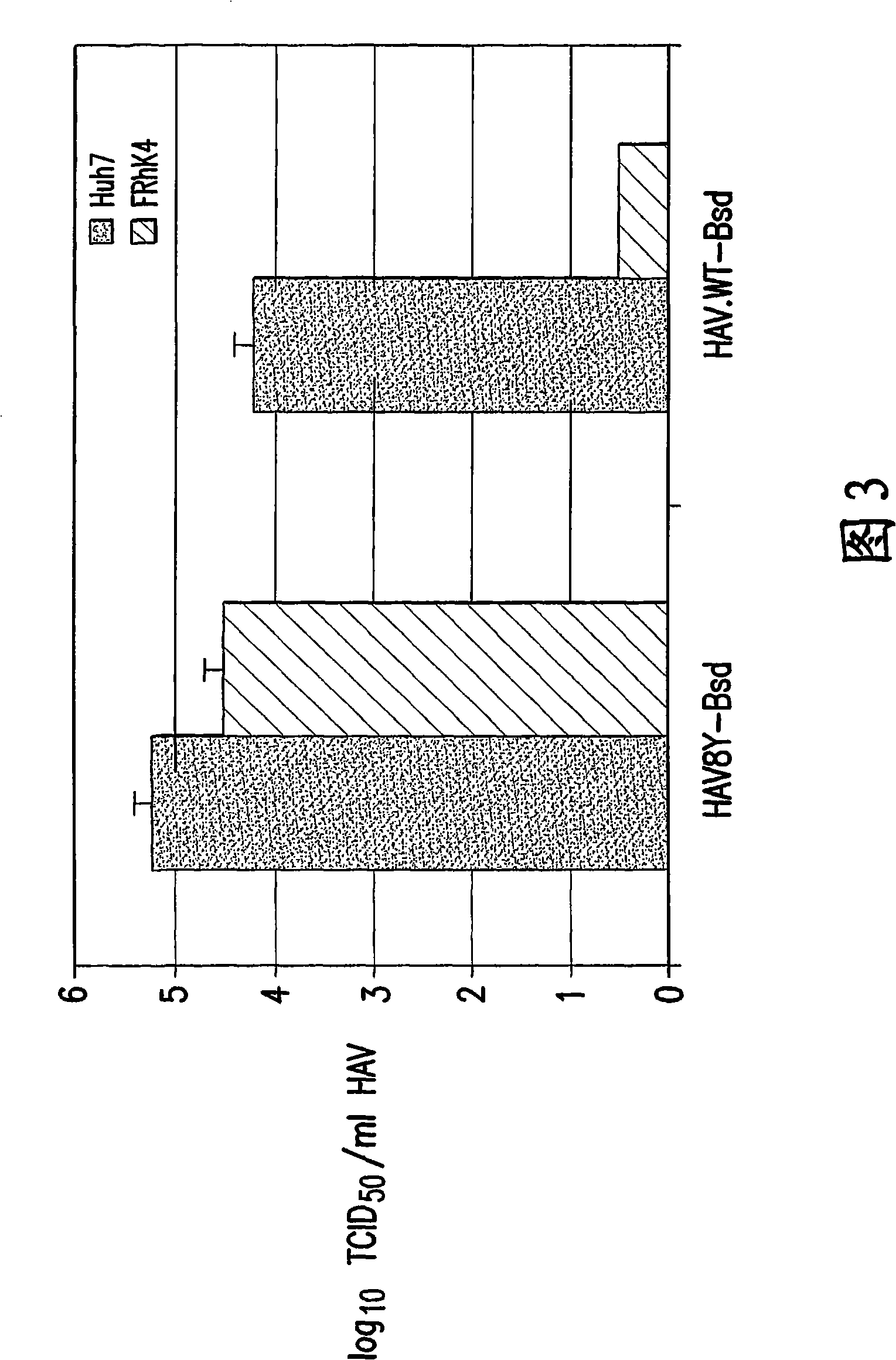Growth of wild-type hepatitis a virus in cell culture
A hepatitis A virus and cell technology, applied in the direction of viruses, microorganisms, tissue culture, etc.
- Summary
- Abstract
- Description
- Claims
- Application Information
AI Technical Summary
Problems solved by technology
Method used
Image
Examples
Embodiment 1
[0083] Example 1: Recovery of wt HAV from cells transfected with in vitro transcripts.
[0084] To rescue HAV8Y-Bsd, the SP6 transcript was transfected into Huh7, FRhK4, GL37, HeLa, Vero, CHO, MMH-D3, and Jurkat cells. One day after transfection, cells were passaged 1:6 and grown in medium containing 1, 2, 4, or 5 μg / ml blasticidin. After 14 days of selection with 1 μg / ml blasticidin, few blasticidin-resistant colonies grew in HAV8Y-Bsd RNA transfected Huh7 cells, but not mock-transfected cells. Transfected Huh7 cells did not survive selection with higher concentrations (2, 4, or 5 μg / ml) of blasticidin. All other transfected cell lines were not viable in the presence of blasticidin treatment, showing that HAV8Y-Bsd could only be rescued from Huh7 transfected cells. IF analysis (Figure 2) showed that blasticidin-resistant Huh7 cells had cytoplasmic granular fluorescence characteristic of HAV-infected cells (B), which was not observed in mock-transfected cells (A). To assess...
Embodiment 2
[0086] Example 2: Stable growth of wt HAV in Huh7 cells.
[0087] It was of interest to determine whether the strong selection pressure for cell culture-adapted and attenuating mutations observed in most cell lines is also present in Huh7 cells. To investigate whether wt HAV containing the Bsd selectable marker could grow stably in Huh7 cells without accumulating cell culture-adapted mutations and retain the selectable marker, we performed HAV8Y-Bsd in the presence of 1 μg / ml blasticidin and nine serial passages of HAV.WT-Bsd in Huh7 cells. RT-PCR amplification and nucleotide sequence analysis of HAV RNA extracted from nine serial passages showed that the inserted bsd gene was stable in both viruses. The nucleotide sequences of the 2B-2C and 5'-NTR regions of the ninth passage HAV8Y-Bsd and HAV.WT-Bsd were identical to the parental cDNAs, suggesting that these viruses do not accumulate cell culture-adapted mutations at these two hotspots. To further assess the stability of w...
Embodiment 3
[0088] Example 3: HAV8Y-Bsd-infected Huh7 cells cured / eliminated by IFN-αA / D are sensitive to wt HAV infection.
[0089] Blasticidin-resistant cells infected with HAV.WT-Bsd in Example 1 were cured using interferon (9). To achieve the above, blasticidin-resistant HAV8Y-Bsd-infected cultures were subcultured several times in the presence of 100, 250, or 500 IU / ml IFN-αA / D in medium lacking blasticidin Huh7 cells. After 7 passages, IF analysis showed that cells treated with 250 (Fig. 4A) or 500 U / ml (data not shown) IFN-α A / D lost HAV antigen, while untreated control cells (Fig. 4A) and some cells cultured in the presence of 100 IU / ml IFN-αA / D had the characteristic cytoplasmic fluorescence of HAV-infected cells (data not shown). To determine whether interferon-treated cells that had lost HAV antigens also became sensitive to blasticidin, the interferon-treated cells were cultured in the presence of 0.5-10 μg / ml blasticidin for 10 days, and the cultures were observed by micro...
PUM
 Login to View More
Login to View More Abstract
Description
Claims
Application Information
 Login to View More
Login to View More - R&D
- Intellectual Property
- Life Sciences
- Materials
- Tech Scout
- Unparalleled Data Quality
- Higher Quality Content
- 60% Fewer Hallucinations
Browse by: Latest US Patents, China's latest patents, Technical Efficacy Thesaurus, Application Domain, Technology Topic, Popular Technical Reports.
© 2025 PatSnap. All rights reserved.Legal|Privacy policy|Modern Slavery Act Transparency Statement|Sitemap|About US| Contact US: help@patsnap.com



